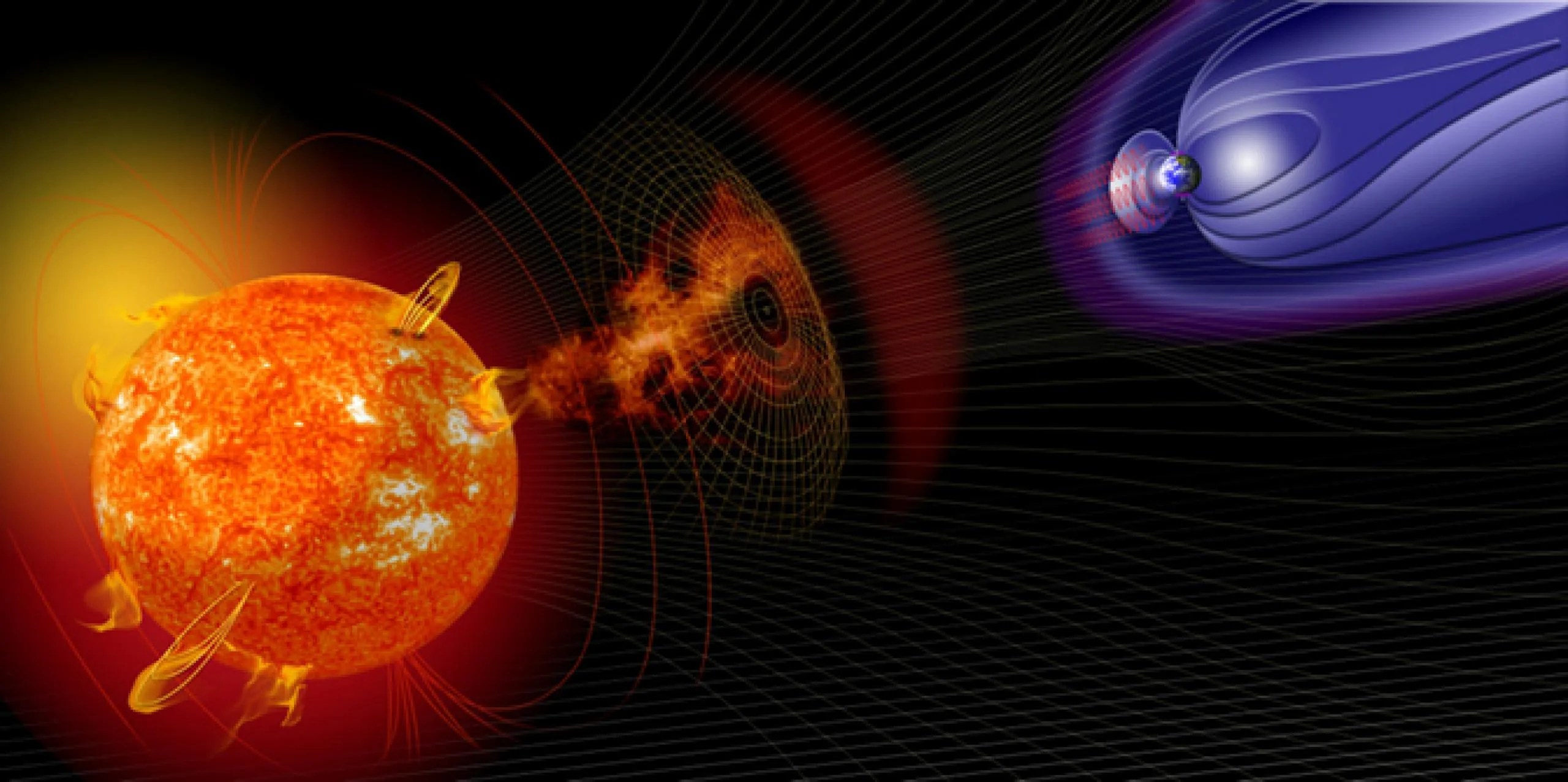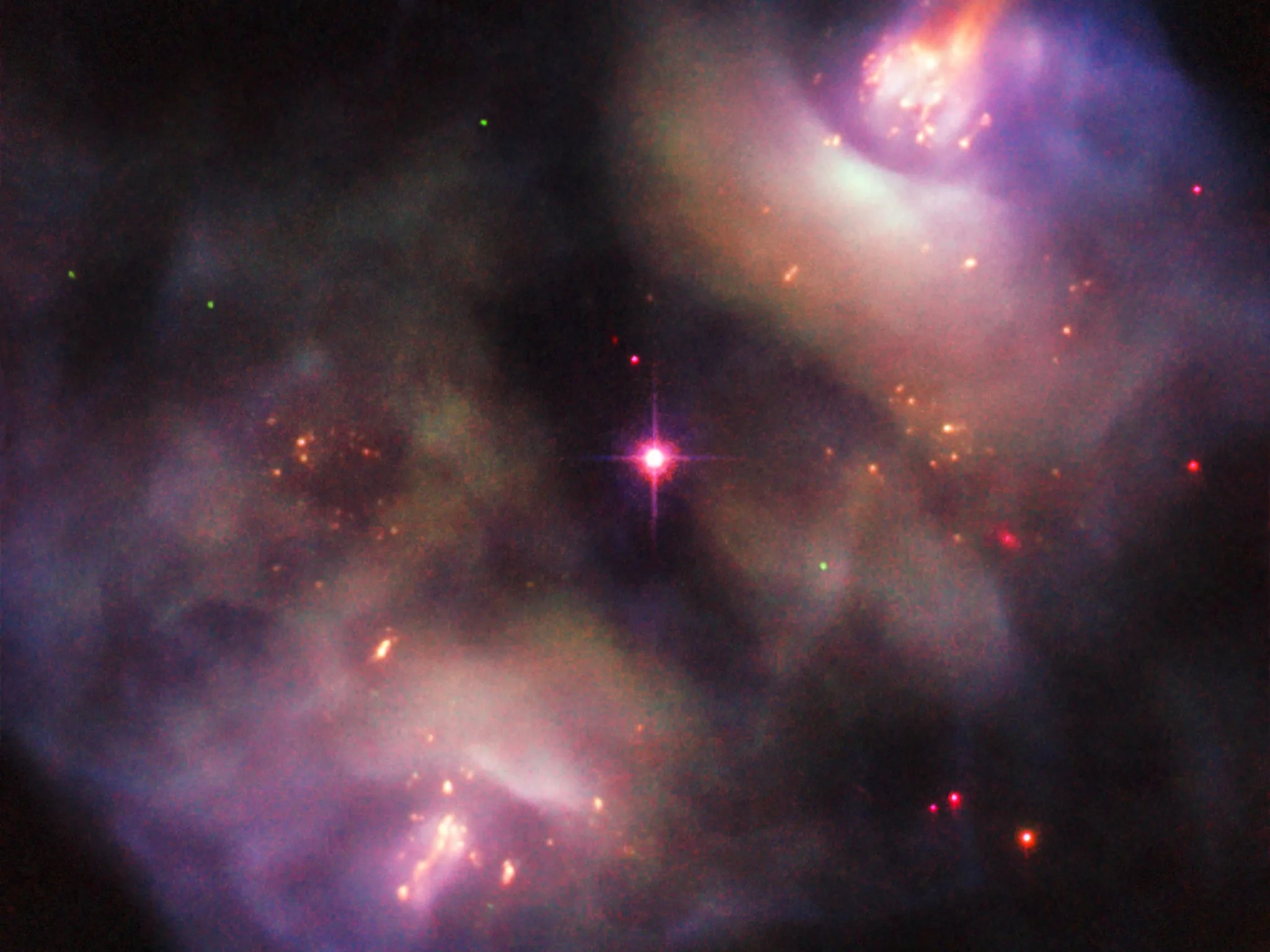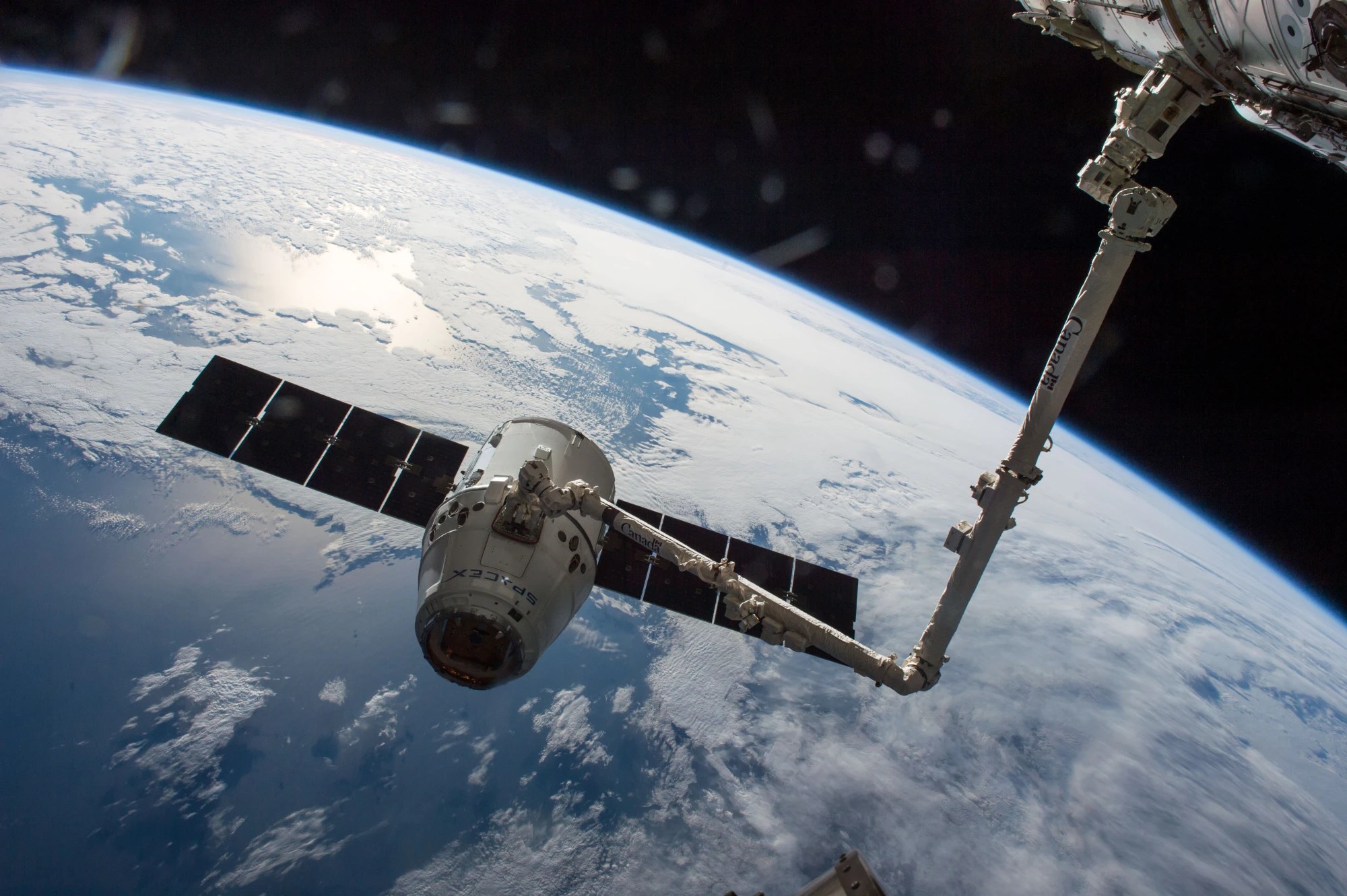Heliophysics Research
NASA's heliophysics research program supports a wide array of research to study the interconnected system linking the sun to Earth, to the planets, and the particles and magnetic energy coursing through space itself.
NASA’s heliophysics strategic objective is to understand the sun and its interactions with Earth and the solar system, including space weather.
The Heliophysics Research Program focuses on achieving the goals as defined in the NASA 2014 Science Plan and the 2013 National Research Council Decadal Strategy for Solar and Space Physics report, Solar and Space Physics: A Science for a Technological Society. Heliophysics research addresses these recommendations by implementing a program to achieve three overarching science goals:
- Explore the physical processes at work in the space environment from the sun to Earth and throughout the solar system.
- Advance our understanding of the connections between the sun, Earth, the planetary space environments, and the outer reaches of our solar system.
- Develop the knowledge and capability to detect and predict extreme conditions in space to protect life and society and to safeguard exploration beyond Earth.
The program supports investigations in all subdisciplines of heliophysics and as well as investigations that span across subdisciplines, addressing a systems approach. The program emphasizes understanding the fundamental processes and interconnections across the traditional science disciplines. The program seeks to characterize such phenomena on a broad range of spatial and temporal scales, to understand the fundamental processes that drive them, to understand how the processes combine to create space weather events, and to enable a capability for predicting future space weather events.
In concert with other NASA science divisions (Planetary Science, Astrophysics, and Earth Science), the program shares responsibility for learning about Earth, our solar system, the universe, and their interrelationships.
The program supports:
- Investigations of the sun, including processes taking place throughout the solar interior and atmosphere and the evolution and cyclic activity of the sun.
- Investigations of the origin and behavior of the solar wind, energetic particles, and magnetic fields in the heliosphere and their interaction with Earth and other planets, as well as with the interstellar medium.
- Investigations of the physics of magnetospheres, including fundamental interactions of plasmas and particles with fields and waves, and coupling to the solar wind and ionospheres.
- Investigations of the physics of the terrestrial mesosphere, thermosphere, ionosphere, including the coupling of these phenomena to the lower atmosphere and magnetosphere.
Program Elements
Heliophysics Supporting Research:
Heliophysics Supporting Research supports investigations that employ a variety of techniques -- including theory, numerical simulation, modeling, analysis, and interpretation of space data. The investigations that will be of highest priority are those that use data from current or historical NASA spacecraft, together with theory and/or numerical simulation to address one of the four Heliophysics Decadal Survey goals. Heliophysics Supporting Research covers investigations of the solar interior, solar photosphere, solar chromosphere, transition region, and corona; particle acceleration, transport, modulation in the heliosphere, heliospheric plasma processes, turbulence, waves, composition, interplanetary coronal mass ejections/magnetic clouds and of the outer heliosphere and the interstellar boundary; solar wind – magnetosphere coupling, dayside outer magnetosphere, inner magnetosphere, magnetosphere-ionosphere coupling and magnetotail; ionosphere – atmosphere coupling, neutral atmosphere and solar output-ionosphere/atmosphere coupling; and other planetary magnetospheres.
Heliophysics Technology and Instrument Development for Science:
The Heliophysics Technology and Instrument Development for Science, or H-TIDeS, program solicits proposals for technology and instrument development investigations that are relevant to NASA's heliophysics programs. The H-TIDeS program seeks to investigate key heliophysics science questions by addressing the best possible (i) science and/or technology investigations that can be carried out with instruments flown on suborbital sounding rockets, stratospheric balloons, International Space Station, CubeSats, or other flights of opportunity; (ii) state-of-the-art instrument technology development for instruments that may be proposed as candidate experiments for future space flight opportunities; and (iii) laboratory research.
The H-TIDeS program element has three components:
- Low Cost Access to Space investigations may be science investigations in and of themselves or proof-of-concept experiments for techniques/detectors that enable new heliophysics science. This includes rides on research balloons, sounding rockets, the international space station, commercial reusable suborbital rockets, CubeSats, and other flights of opportunity. Such investigations that launch into space in order to return scientific data are expected to make direct contributions to the science of heliophysics.
- Instrument and Technology Development investigations focus on the development of instrument technologies that show promise for use in scientific investigations on future heliophysics science missions, including the development of laboratory instrument prototypes, but not of flight hardware. Instrument development proposals are not necessarily expected to apply the results of their efforts to science questions within the time period of the proposed effort. They must, however, demonstrate that there are specific scientific problems, for which the development is a necessary precursor.
- Laboratory Nuclear, Atomic, and Plasma Physics supports studies that probe fundamental physical processes and produce chemical, spectroscopic, and nuclear measurements that support spacecraft measurements and atmospheric models.
Heliophysics Guest Investigators:
The Heliophysics Guest Investigators program was strongly endorsed by the 2013 Decadal Survey. This program is offered for investigations that draw extensively upon the data sets from the missions of the Heliophysics System Observatory. The focus of the solicited research continuously evolves to ensure that the most important questions identified for recently launched heliophysics missions are addressed and that high-value data products of currently operating heliophysics missions are created to enable significant advances in heliophysics science.
Heliophysics Grand Challenges Research:
Another program that was strongly supported in the 2013 Decadal Survey is the Heliophysics Grand Challenges Research program. As recommended, the goals of this program are specifically designed to support investigations of complex problems that fall within the general realm of heliophysics and whose full resolution has remained elusive. Work on such problems has traditionally been carried out by independent research groups that employ observational, theoretical, and modeling-based approaches. Increasingly, major advances in the field are taking place as a result of the close interactions between observers, theorists, and modelers. Thus, a coherent attack on the most challenging broad problems requires the efforts of a synergistically interacting group of multidisciplinary teams led by a single Principal Investigator, so as to enable deep and transformative science.
The Heliophysics Grand Challenges Research program has two components:
- Theory, Modeling, and Simulations provides one foundation of the program. As computing power becomes more affordable and more available, numerical simulations and modeling become tools that can be used synergistically with data analyses and rigorous theory development to solve the fundamental problems of heliophysics. They lead the way to new understanding and drive science concepts for future strategic missions. The ultimate goal of such investigations is to provide a complete chain of reasoning extending from the basic laws of nature to comparison with observation to the identification of future quantitative tests of the behavior of the environment.
- Science Centers form a second, new foundation of the Heliophysics Grand Challenges Research program. This part has also been strongly endorsed by the 2013 Decadal Survey, and is currently under programmatic development for implementation.
Heliophysics Living With a Star Science:
The goal of NASA’s Living With a Star Science program is to develop the scientific understanding needed to effectively address those aspects of heliophysics science that affect life and society. To ensure this, the H program solicits research for focus teams which coordinate large-scale investigations that cross discipline and technique boundaries, leading to an understanding of the entire system linking the sun to the solar system both directly and via the heliosphere, planetary magnetospheres, and ionospheres.
A primary goal of NASA’s Living With a Star program is the development of first-principles-based models for the coupled sun-Earth and sun-solar system, similar in spirit to the first-principles models for the lower terrestrial atmosphere. Such models can act as tools for science investigations, as prototypes and test beds for prediction and specification capabilities, as frameworks for linking disparate data sets at vantage points throughout the sun-solar system, and as strategic planning aids to enable exploration of outer space and testing new mission concepts. Strategic Capabilities are the development and integration of such models for all the various components of this system.
Heliophysics Data Environment Enhancements:
The goal of the Heliophysics Data Environment Enhancements program is to enable breakthrough research in Heliophysics by providing both a state of the art data environment and necessary supporting infrastructure to maximize the scientific return of the NASA missions. It is essential that observations be properly recorded, analyzed, released to the general public, documented, and rapidly turned into scientific results. These studies are carried out in support of the Heliophysics strategic goals and subgoals in NASA’s 2014 Strategic Plan and Chapter 4.1 of the NASA 2014 Science Plan. The recommended priorities of the Heliophysics community are also discussed in the 2013 Decadal Survey.
The program encompasses the data environment needs throughout heliophysics, including solar, heliospheric, and geospace sciences.
View all of the missions supporting heliophysics research.
The Sun
The sun is a dynamic star, made of super-hot ionized gas called plasma.
The sun's surface and atmosphere change continually, driven by the magnetic forces generated by this constantly-moving plasma. The sun releases energy in two ways: the usual flow of light that illuminates the Earth and makes life possible; but also in more violent and dramatic ways--it gives off bursts of light, particles, and magnetic fields that can have ripple effects all the way out to the solar system's magnetic edge.
Read More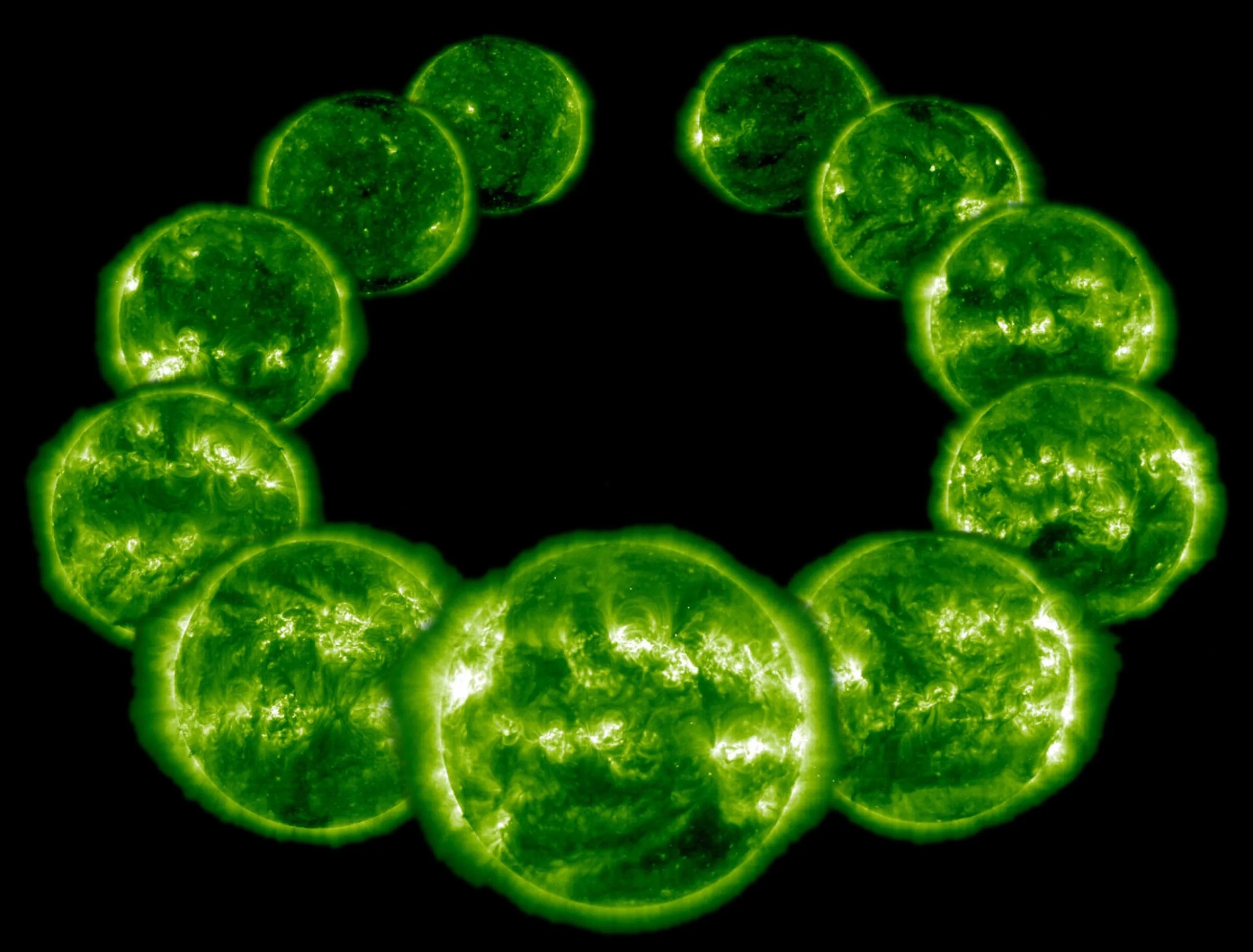
Magnetospheres
A magnetosphere is the region around a planet dominated by the planet's magnetic field.
Other planets in our solar system have magnetospheres, but Earth has the strongest one of all the rocky planets: Earth's magnetosphere is a vast, comet-shaped bubble, which has played a crucial role in our planet's habitability. Life on Earth initially developed and continues to be sustained under the protection of this magnetic environment.
Read More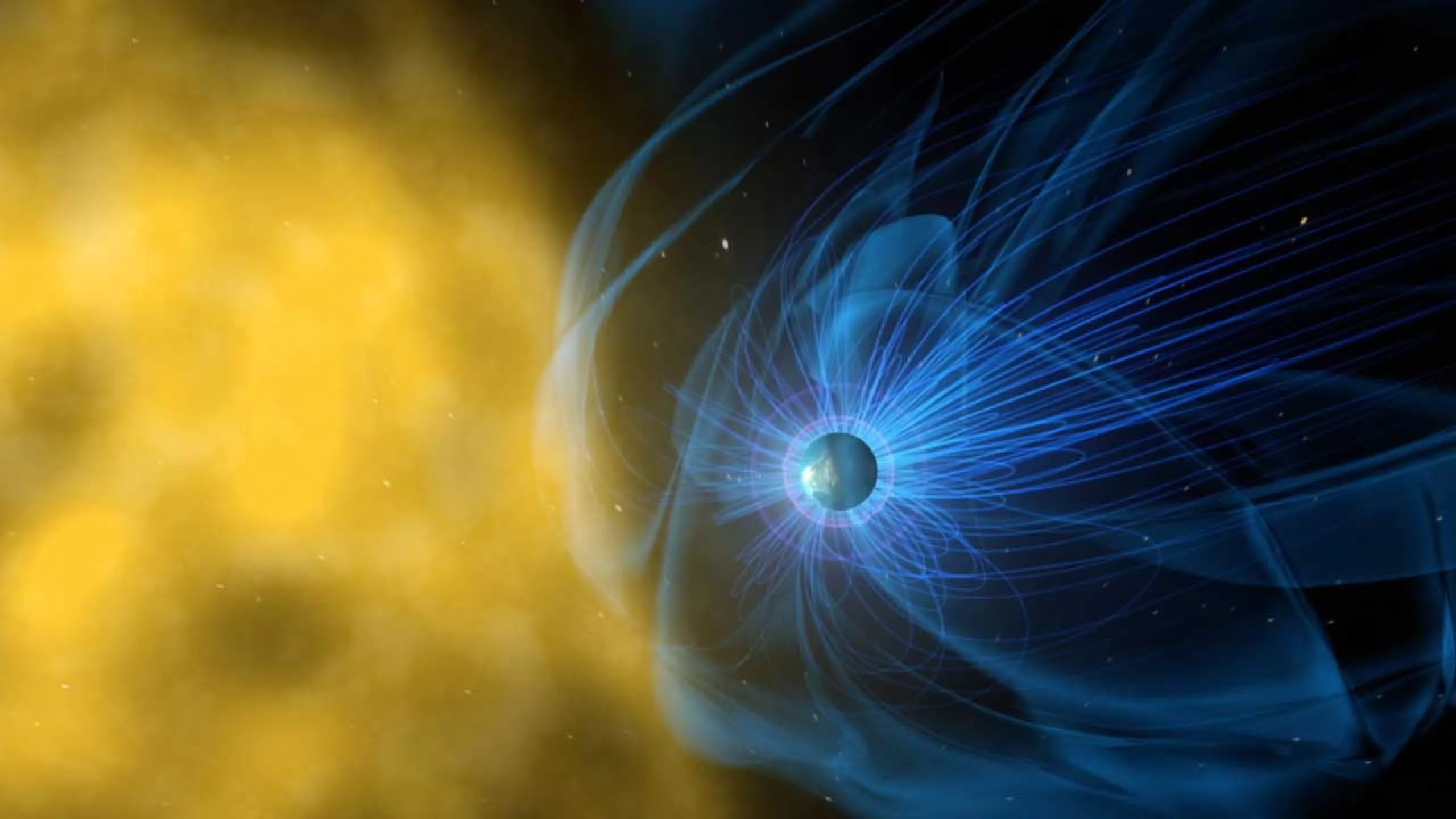
Space Weather
Though space is about a thousand times emptier than even the best laboratory vacuums on Earth, it’s not completely devoid of matter.
The sun’s constant outflow of solar wind fills space with a thin and tenuous wash of particles, fields, and plasma. This solar wind, along with other solar events like giant explosions called coronal mass ejections, influences the very nature of space and can interact with the magnetic systems of Earth and other worlds. Such effects also change the radiation environment through which our spacecraft – and, one day, our astronauts headed to Mars – travel.
Read More